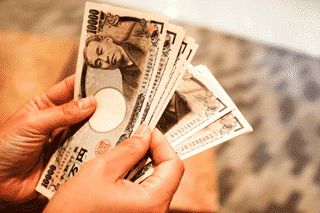
Dollar Rises, Sterling Falls amid Chaos
FX NEWS – The US dollar has managed to rise on Tuesday, benefitting from demand from traders after a lackluster Monday trading.
The euro traded at 1.1129 against the dollar, down 0.4%. Meanwhile, the US dollar index gauging the greenback’s strength against six other majors was 0.4% higher at 98.493.
Against the Japanese yen, however, the dollar lost 0.9% to 106.82.
Over in the United Kingdom, the British pound was at 1.0980 against the euro. Against the US dollar, the pound sterling was at $1.2208.
Earlier, the Bank of Japan injected more than $30 billion into markets with an 84-day dollar funding operation.
Meanwhile, in the Land Down Under, the Reserve Bank of Australia announced plans to have a meeting on Thursday, which would be two weeks of original schedule. Many traders believe this signals another rate cut on the way.
The sterling, on the other hand, has been among the weakest performing currencies. Its central bank, Bank of England, will meet on March 26 to set interest rates. However, traders don’t rule out the possibility of an interest rate move before that date, as the coronavirus crisis rampages on the market.
Yen Still Strong amid Crisis
Meanwhile, the Japanese yen was mostly firm. Risk-sensitive currencies floundered and weren’t able to find solid footing.
Coordinated moves by world central banks failed to alleviate investor jitters over the coronavirus pandemic.
Over the last days, global risk assets stumbled. Market downturn dominated traders amid pandemic concerns. At the same time, the governments adopt more draconian moves to counter the fallout from the COVID-19 panic.
According to one analyst, the liquidity in the market has “evaporated,” adding bold efforts from central banks failed to calm down markets.
Higher-yielding currencies weakened because of the liquidity anxiety. These currencies include the Australian dollar.
Meanwhile, those with negative yields like the yen, euro, and Swiss franc have largely escaped bloodbath.
The US Federal Reserve, along with other major central banks, implemented actions to prop up markets, including the FX markets. However, traders were still worried because of the virus’s breakneck speed of spread.
According to some FX news analysts, the hasty moves of central banks might have backfired. That’s because such knee-jerk moves from them might indicate panic among policymakers.
Global coronavirus cases jumped 174,100 as of writing, with 6,700 deaths. These figures have prompted many countries to shut borders and take drastic measures to reduce the impact on forex markets.
- Check-out Financebrokerage’s comprehensive Review on IQ Options




